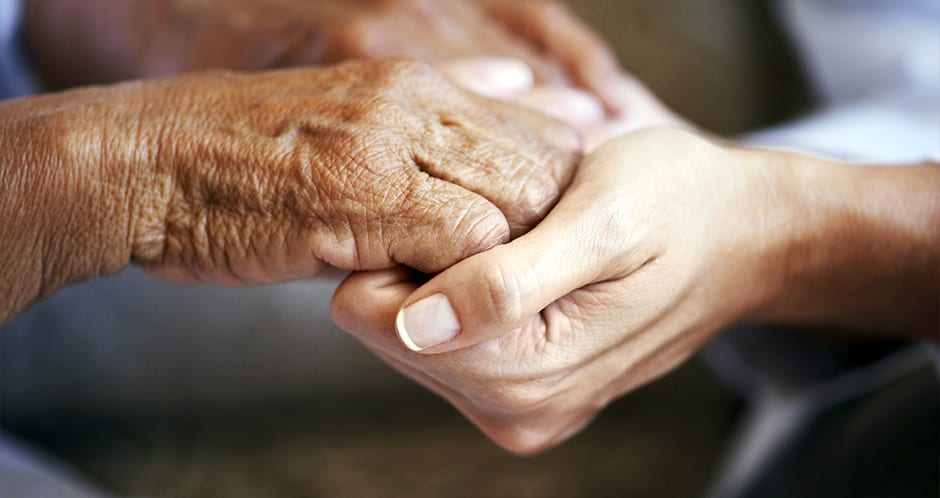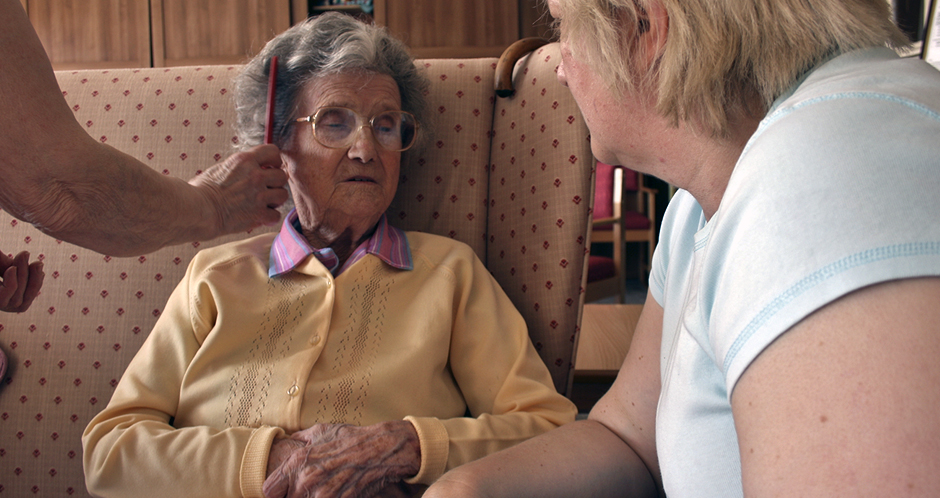
“Namaste” is a traditional greeting in the Hindu culture, and is more commonly heard in the West when practicing Yoga.
But “Namaste Care”, however, is a program developed to help improve the quality of life of people with dementia.
Namaste Care was developed in 2003 by Joyce Simard to especially help people with advanced dementia or people who did not benefit from traditional activities.
And one real upside of this program is that it does not need extra funding or specialised staff, and can be done as a part of the facility’s lifestyle activities.
There are two main principles at the core of this program – environment and loving touch.
“Environment” here means having a calm atmosphere, with a small group making it feel family-like.
To best utilise Namaste Care, a comfortable space which can accommodate 8-10 people is used for two hours in the morning and two hours in the afternoon.
To make it more pleasant and “homely” for the residents, you can use lounge chairs and blankets.
The room should not have too many distractions, and soft lighting and relaxing music can be used to calm the atmosphere. Aromatherapy oils could also be used – lavender can do wonders for tension and anxiety.
It is important to make sure the resident is comfortable and not in any pain.
The focus of the “environment” aspect is that the resident is calm and at ease – if this means that they would prefer to be on their own in their room, then Namaste Care can be done there.

The second part of Namaste Care is the “loving touch”. Loving touch is about being compassionate, slow, and person centered in the care that is given. This contrasts with the more traditional care offered which can be task oriented and is required to be time-efficient.
Massage and personal care is what the “loving touch” part of the program is entered around. This includes massage of hands and feet, applying to residents’ faces a moisturising cream with calming and familiar scents of the past, and carefully brushing residents’ hair or providing a gentle scalp massage.
It’s been advised for the best results, a recommended ratio of residents to staff or carer is one to one – something that may be hard to achieve in most aged care facilities.
And that the carer remains with them for the whole session – at no point should the residents be left alone.
It’s crucial that the carer soothes the resident and talks to them, regardless of the resident’s ability to speak or communicate. In some cases, it’s been found that the resident does reciprocate and communicates back.
Teamwork plays a major role in Namaste Care and there may be a reshuffling of staff and care that is provided. Staff are also required to work together to help each other care for the group.
Through improving their “environment” and offering the person with dementia a “loving touch”, changes can be seen in the person with dementia.
St Christopher’s Hospice and the South London and Maudsley Foundation Hospital Trust underwent a research study to implement the Namaste Care programme in local South London Nursing Care Homes looking after people with dementia.
Their study found that Namaste Care reduced the frequency and severity of behavioural symptoms in people with advanced dementia. From their research, a useful ‘toolkit’/manual for implementing Namaste Care was also created to help other achieve similar results.
The positive consequences that occur does not only impact the person with dementia, but also the family and the staff around them.
Families find that as the person with dementia shows improvement, that there is better quality interactions and visits become more enjoyable. Many families feel at ease seeing their loved one benefiting from the program’s care.
Staff find that they have more job satisfaction when they see how residents are improving with personable care in a calm environment. And as the resident changes and improves, the challenges in caring for them also decrease.
Dementia is a complex condition that is unique in every person that has it. Finding ways to soothe and ease people with dementia symptoms is helpful to them and the community around them. Caring for people with dementia can be challenging, and what Namaste Care shows is that maybe all they need is a “loving touch”.
5
Sounds great but may require more than one staff member to organise and supervise. I can only see it happening in the larger homes where they may have a spare quiet room and people to move and organise residents. But still a great idea even if we could do it on a smaller scale. As a volunteeer I have recently found more success just concentrating on one or 2 residents on any particular day… must read this article more fully, thank you.
That video made me cry… this is just what our residents need… we did prepare to do this program with a very capable girl organising it but she kept getting dragged away for admin and paperwork that she despaired and left us a few weeks ago… what a terrible loss, we are trying but a great leader is the solution to most of these great programs. Thank you for reenergising me.